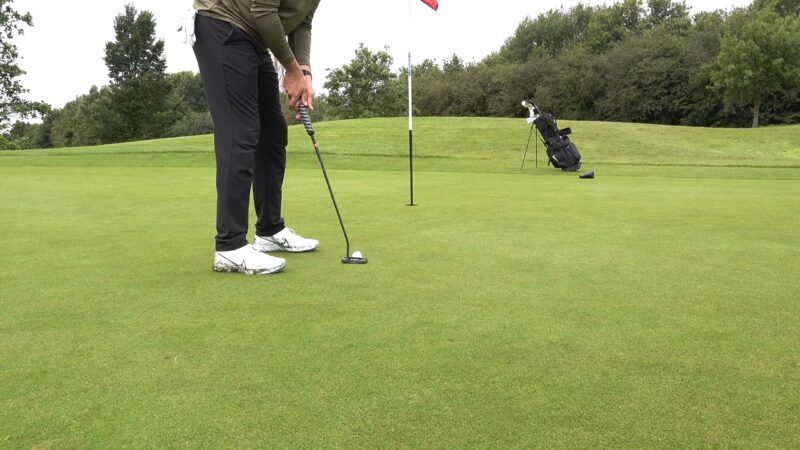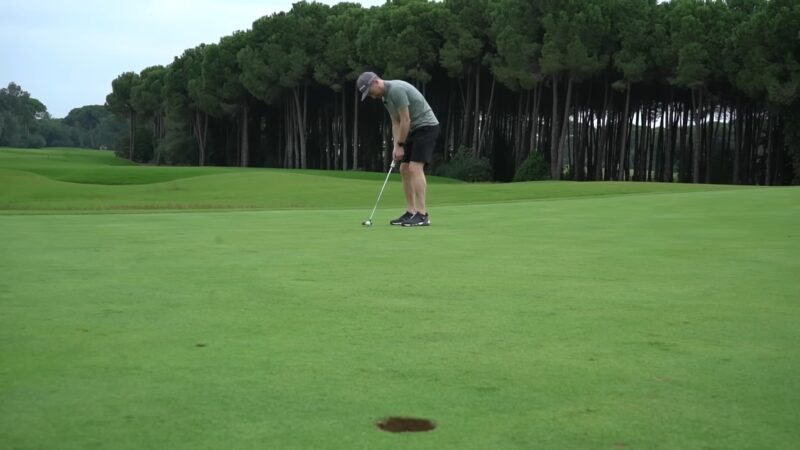All of us golfers and golf lovers alike know that there’s nothing quite like the thrill of sinking a birdie. It’s a term we hear all the time in the sport, but there’s more to it than meets the eye. Understanding the true meaning of a birdie can actually improve your game and make you appreciate golf even more.
Today I want to help you be at the top of your game which is why we’ll explore the meaning and importance of this term.
Scoring Basics
The scoring system of golf is what truly distinguishes it from other sports. It is paradoxical to many other sports: the lower the score, the better. Every hole on a golf course has a predetermined number of shots, or “par,” that an accomplished golfer is expected to need in order to sink the ball.
Golf scores are typically spoken in relation to par. For example, if par is four and you make it in four shots, you’re said to have made “par.” In addition to par, there are terms for performing above or below this standard.
When a golfer takes one fewer shot than the par to hole out, it’s referred to as a birdie. This achievement signifies an excellent performance on that hole and is celebrated by golfers at all skill levels.
| Par | Men’s Yardage | Men’s Meters | Women’s Yardage | Women’s Meters |
|---|---|---|---|---|
| 3 | Up to 250 | Up to 230 | Up to 210 | Up to 190 |
| 4 | 251 to 470 | 231 to 430 | 211 to 400 | 193 to 366 |
| 5 | 471 to 690 | 431 to 631 | 401 to 575 | 367 to 526 |
| 6 | 691 or more | 632 or more | 576 or more | 527 or more |
The Evolution of Par

The concept of par has not always been a staple of golf. Introduced around the late 19th century, it has played an essential role in making golf the game of skill and precision that we know today. Early on, the term “bogey” was used to refer to the ideal score.
Over time, this was replaced with “par,” and the term “bogey” was repurposed to represent one over par. The transformation in golf scoring terminology not only standardized the scoring system but also paved the way for terms like birdie and eagle.
As the game evolved, so too did the excitement and challenge associated with exceeding the par standard. The advent of terms like birdie served to motivate golfers to continuously improve their game.
The Birth of the Birdie

This term finds its roots in American slang. At the turn of the 20th century, “bird” was used as a synonym for “excellent.” The story goes that Ab Smith, a well-known golfer, coined the term “birdie” during a round of golf in 1899.
After sinking a particularly challenging putt, he reportedly exclaimed that it was a “bird of a shot,” referring to its excellence. From then on, a score of one under par became known as a birdie. Understanding the history behind the term provides a fascinating lens through which to view the sport.
It not only adds depth to our knowledge of this sport but also brings a unique and captivating narrative to each round played.
Its Impact
The impact of the birdie on the sport of golf cannot be overstated. It has served as a measure of skill and a beacon of achievement for golfers worldwide. The thrill of making a birdie can fuel a golfer’s passion for the game, inspire continuous improvement, and provide a tangible goal to strive for.
The birdie’s role in competitive golf is equally significant. In tournaments, these can quickly change the leaderboard and bring a fresh dynamic to the competition. It adds an exciting layer of strategy to the game as golfers must decide when to take risks for potential birdies and when to play it safe for par.
Strategies for Making a Birdie
Scoring a birdie requires a combination of skill, strategy, and sometimes a bit of luck. Let’s explore some strategies that can increase your chances of achieving this exciting milestone.
Technical Skills
To give yourself the best chance of making birdies, you’ll need to hone a few key golfing skills. First and foremost, a strong and accurate drive off the tee is essential. It sets the stage for the rest of the hole and can significantly increase your chances of a birdie.
Good chipping and putting skills are also crucial as they allow you to get close to, and ultimately into, the hole with fewer strokes. In addition, understanding the golf course is key to making birdies. This includes knowing the terrain, wind conditions, and the best approach for each hole.
The more you familiarize yourself with a course, the better your chances of scoring under par.
The Mindset of a Birdie Maker

The technical aspects of golf are undoubtedly important, but achieving these scores also requires the right mindset. Patience is paramount; rushing your shots or attempting to force a birdie can often lead to mistakes.
Instead, focus on playing each shot to the best of your ability and let the birdies come naturally. A positive mindset can go a long way in achieving this score. Golf can be a frustrating game, and it’s easy to get down on yourself after a few bad shots.
However, maintaining a positive attitude and believing in your ability to make this score can often be the difference between making and missing that crucial putt.
How to achieve it?
Get your golf ball in position
Most recreational golfers won’t be making this score from the rough, dense trees, or water hazards. You need to choose your club wisely. A driver isn’t always the best option. Finding the fairway with your tee shot is the first step to a golf score under par.
Target shorter holes
On any given hole, the shorter your second shot is, the more likely it is that you will be closer to the hole with your approach. It makes scoring easier.
A seasoned golfer will look at the scorecard and use strategic planning to target these holes as potential birdie holes. A par 3 will provide good birdie chances, but your first shot will have to be a good one!
A par 4 less than 350 yards could provide opportunities, as could a par 5 under 450 yards.
Practice your putting
Most golfers won’t be left with a tap-in birdie putt. Most professional golfers make their scores from long range and the secret is that they are really good at putting. Mastering the putter is something even beginners can get good at, so find a putting green and practice.
Be patient

An expert golfer will hope to make 1 or 2 birdies in a round of golf. This will be mixed in with pars, bogeys, double bogey, and worse! If you are getting to the green one stroke less than par, then you’re doing great.
If your number of strokes is way above par, don’t be hard on yourself. The game of golf is really tough. On most holes, you may not get the chance to make a birdie, so take your time, find the short grass, and enjoy your time on the course.
A good score will come.
Ask for advice
If you’re struggling to get the ball in the hole, seek guidance from a PGA professional or even your playing partners. They will have also been on the hunt for lower scores and will be happy to help you improve your golf game.
Watching someone scoring a birdie after you have given them a tip is a great feeling.
Birdie vs. Par and Other Scores
The birdie is one of several scores in golf that are relative to par, including the eagle (two under par), albatross (three under par), and the aforementioned bogey. These terms serve as a hierarchy of achievements in golf, with the birdie acting as a significant milestone.
It is a score that separates the average from the exceptional, a goal that motivates golfers to push their limits.
However, it’s also crucial to remember that golf is a game of consistency. While birdies can dramatically improve your score, consistently making par or bogey can also lead to a successful round.
It’s all about finding a balance between risk and reward, and every golfer will have their own approach to this.
FAQs:
What is the rarest score in golf?
The rarest score is a condor, which is four strokes under par. It’s extremely rare and typically only possible on par-5 holes.
What is a tee?
A tee is the area from where you hit your first shot on a hole. It’s also a small peg that you can use to hold your ball up for the first shot on a hole.
What is a good score for a beginner?
A good score for a beginner is typically around 100 for a full 18-hole round.
What is a skin, and how does it relate to birdies?
A skin is a type of betting game where players compete for a prize (the “skin”) on each hole. The player with the lowest score on a hole wins the skin. Therefore, scoring birdies can often lead to winning skins.
How does course design impact the likelihood of scoring a birdie?
Course design can greatly impact the likelihood of scoring a birdie. For example, a course with shorter holes, fewer hazards, and larger greens may present more birdie opportunities.
Conclusion
Golf is a game of skill, strategy, and continuous learning. It demands regular practice and consistency. Furthermore, a birdie is more than just a point on a scorecard; it’s a symbol of personal achievement and progress.
It signifies a well-executed hole and is a source of motivation to improve and achieve even better scores.
Whether it’s your first birdie or your hundredth, each one brings its own sense of accomplishment and satisfaction. The excitement and thrill of making a birdie can ignite a passion for golf that lasts a lifetime, trust me!







